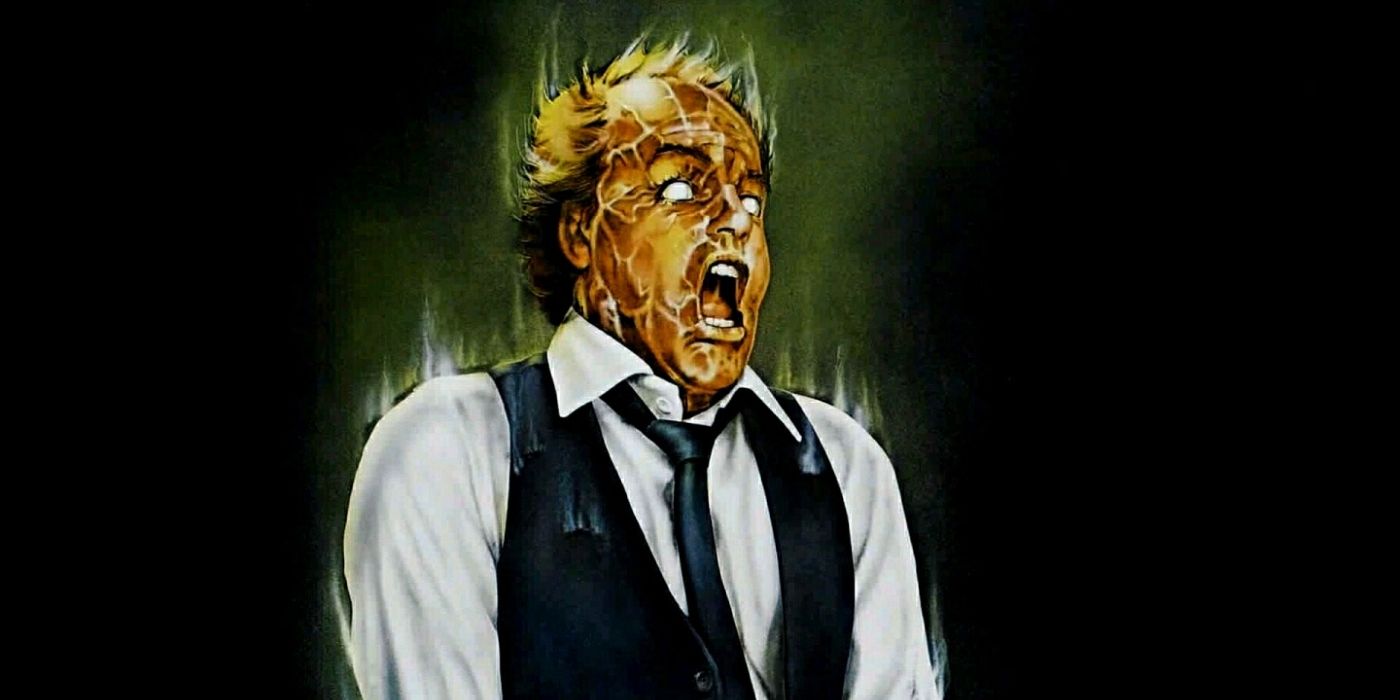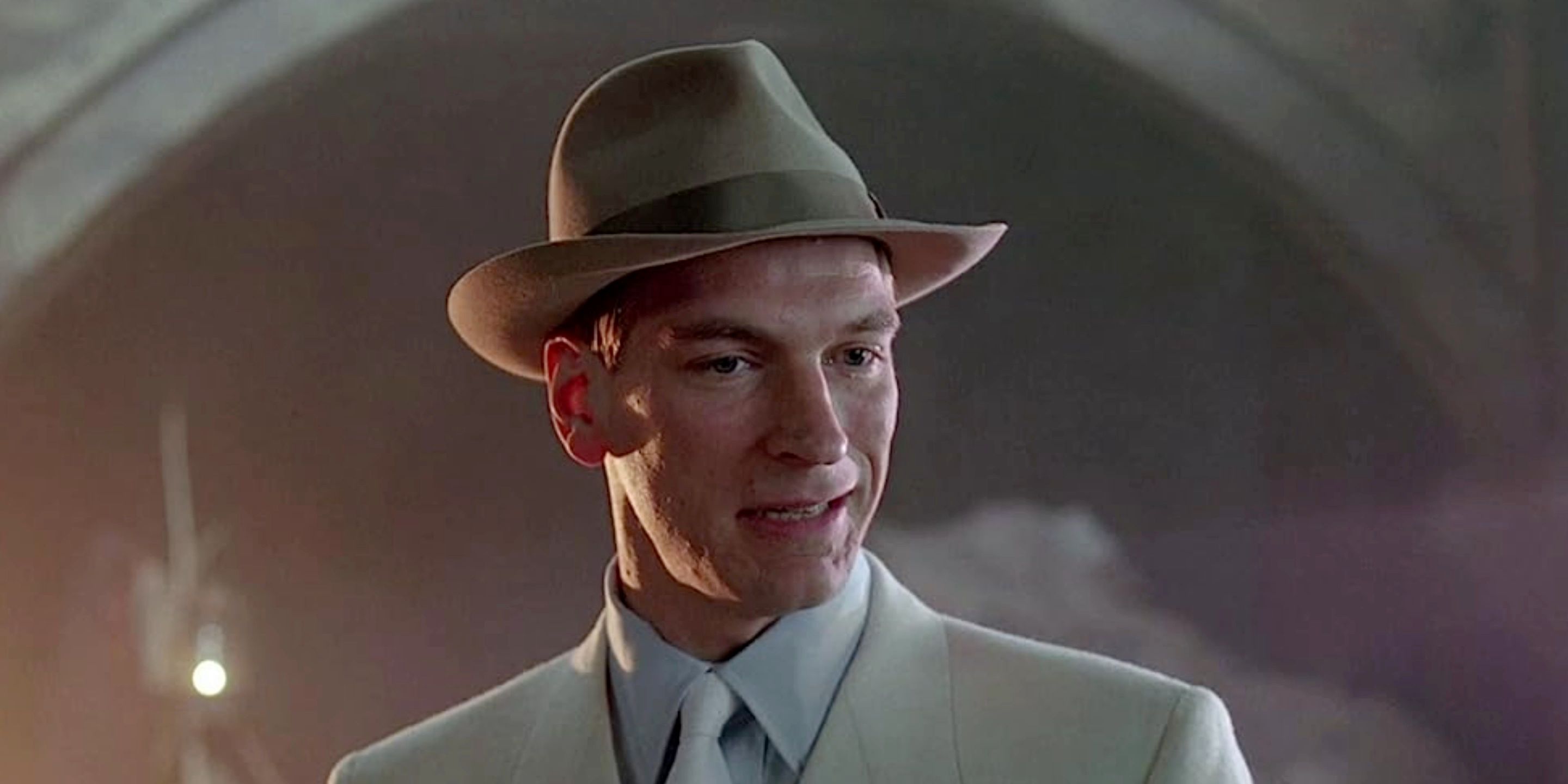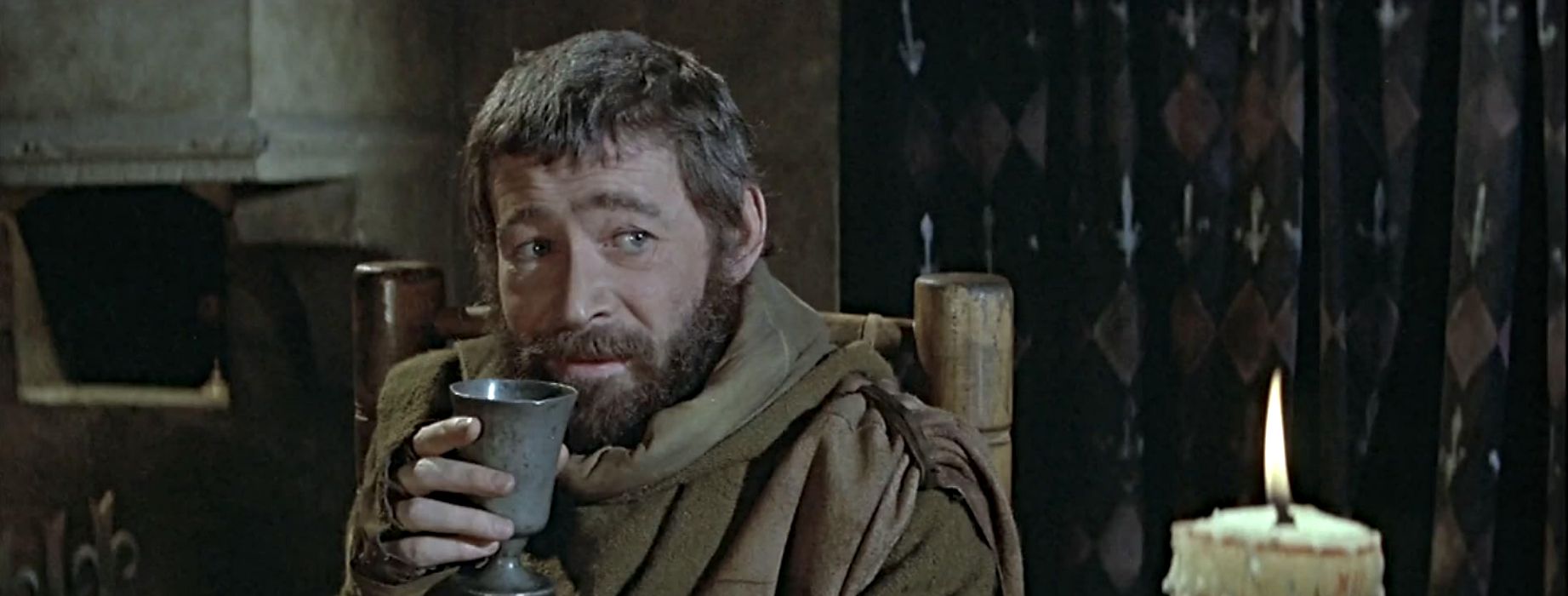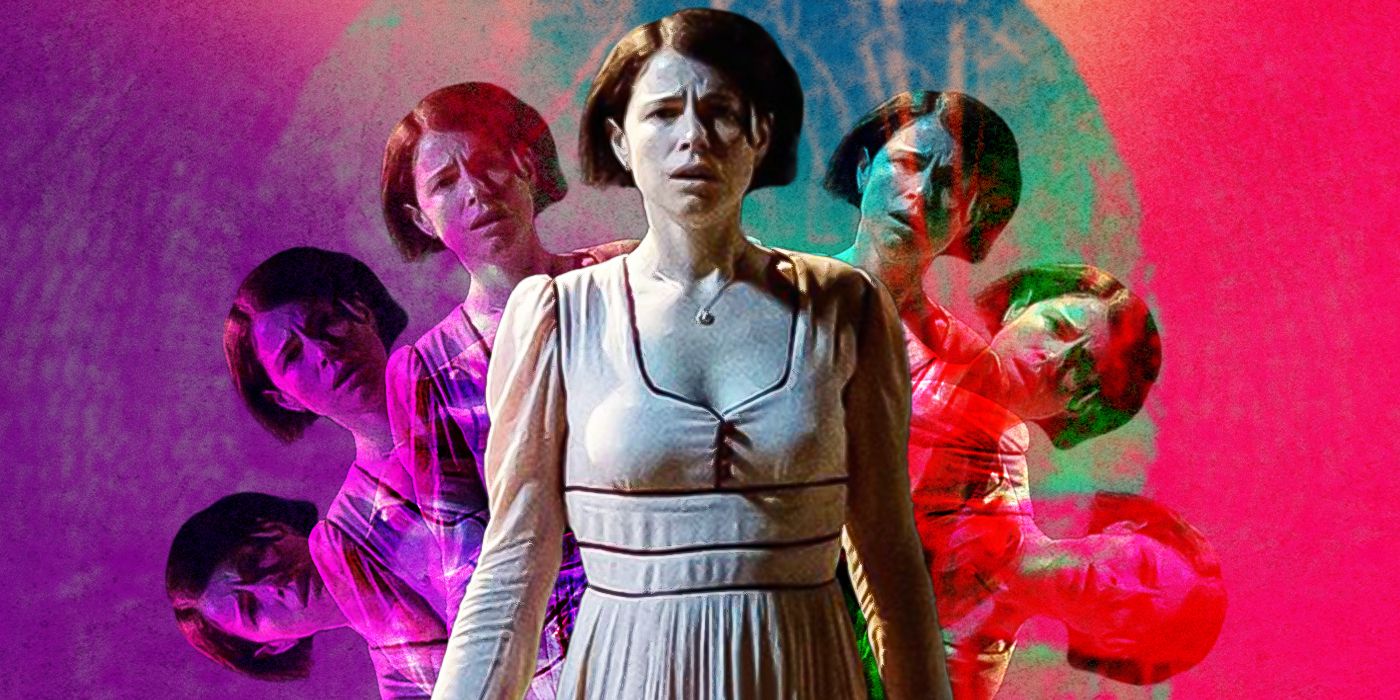The Big Picture
-
Naked Lunch
is a surrealistic journey of addiction and murder in a world of insecticide-induced hallucinations. - Inspired by William S. Burroughs’ own life, the film is a meta-narrative of chaos and rebirth.
- The film bridges the gap between a non-linear novel and a linear plot, exploring trauma and identity.
David Cronenberg‘s 1991 surrealist science fiction drama Naked Lunch is nothing short of an attempt to make order out of chaos. The film is based on the infamous Beat-era writer William S. Burroughs‘s 1959 novel. The film stars Peter Weller as an exterminator named William Lee who becomes addicted to his insecticide and inadvertently murders his wife playing William Tell (a game where a participant aims to shoot an object off the head of another). This propels him into a shady world called Interzone where he encounters a cadre of inhuman creatures who push the addictive drugs harvested by the crafty and deranged Dr. Benway (Roy Scheider). Cronenberg’s film is a desperate attempt to craft a linear narrative from a book that is more or less a series of incomprehensible ramblings. The book was more or less an autobiography that chronicled the author’s life in Tangiers after he murdered his wife, Joan Vollmer Burroughs, also playing William Tell.
Naked Lunch (1991)
After developing an addiction to the substance he uses to kill bugs, an exterminator accidentally kills his wife and becomes involved in a secret government plot being orchestrated by giant bugs in a port town in North Africa.
- Release Date
- December 27, 1991
- Runtime
- 115 Minutes
What Is ‘Naked Lunch’ About?
David Cronenberg’s Naked Lunch is a surrealistic science fiction journey into the mind of a nihilistic, sexually repressed drug user and professional exterminator, William Lee. William and his wife Joan (Judy Davis) are addicted to his insecticide, which has altered his consciousness considerably, causing him to hallucinate. William, something of a writer, is instructed by his bug-like living typewriter to kill Joan, who is an agent of a secret cabal of insecticide dealers called Interzone Incorporated. William’s deteriorating emotional state is evident as he squashes his talking type-writer. Still, upon returning home, he finds his wife engaged in a sex act with his friend Hank and subsequently kills her in a game of William Tell. William flees to Interzone, where he spends his time indulging in mind-altering psychotropic drugs and writing messages to his literary colleagues concerning his mission to infiltrate Interzone Incorporated. William’s reports are typed out on his Clark Nova type-writer, a type of living bug with whom William has a trans-species relationship.
Clark Nova directs William to seek out the mysterious Dr. Benway, the head of Interzone Incorporated. Interzone Incorporated is chiefly employed in producing what is called The Black Meat, an addictive drug made from the fluids and guts of giant Brazilian centipedes. William seduces one of Benway’s employees, Joan Frost, who is a replica of his deceased wife. Joan leads him through a decadent land full of strange alien creatures who guide William through the weird and mysterious world of Interzone. He is eventually introduced to the mysterious and handsome Yves Cloquet (Julian Sands) who is, in reality, a giant alien centipede disguised as a man. Willam eventually concludes that Benway is the one calling the shots and flees to a land called Annexia disguised as a newly minted writer and, after the film, plays another game of William Tell with Joan, the clone of his wife, killing her and driving off into his new life.
‘Naked Lunch’ Was Based on the Life of William S. Burroughs
The screenplay for Naked Lunch was based partly on the same novel but also a film adaptation of the life and works of the novel’s author, William S. Burroughs. In 1985, Burroughs and Cronenberg met in Tangiers to discuss the adaptation of the book. According to a book by Cronenberg’s biographer Chris Rodley, Cronenberg on Cronenberg, Burroughs felt that Cronenberg was the only person fit to make the film. Cronenberg told the Los Angeles Times that to make the film, it would be necessary to “throw the book away” because it would be “banned in every country in the world” due to its multitude of obscenities. With the author’s blessing, Cronenberg crafted a script that drew on the many works of Burroughs and key autobiographical details that would help create a straightforward plot with a beginning, middle, and end.
William Lee is the alter-ego of William S. Burroughs, who killed his wife playing a game of William Tell in Mexico City. The two were heroin addicts, deep in their addiction, and it was during this time that Burroughs decided to fire a loaded handgun at a glass perched atop his wife’s head. Burroughs would miss, and the bullet would strike her in the head, killing her instantly. He fled to the USA, where he would avoid capture and subsequent imprisonment. He was convicted in absentia and received a two-year suspended sentence. Burroughs would credit this terrible moment as the one that made him a writer. This is precisely why this moment appears twice in the book’s film adaptation. It is the inciting incident that pushes the character into the world of Interzone. Still, it was also the moment William Burroughs became a writer whose missives about his mission were formulated into the novel that would become Naked Lunch.The film is a hybridization of the story and autobiographical accounts of the writer because the book itself is otherwise wholly unfilmable.

The Hilarious, Brutal Story Behind the Head Explosion Scene in David Cronenberg’s ‘Scanners’
Many fake heads were harmed in the making of this movie.
Why Was the Book ‘Naked Lunch’ Considered To Be Unfilmable?
The novel Naked Lunch was written as a series of reports about Burroughs’ time spent in Tangiers. The writer moved to Tangier International Zone in 1954, spurned on by the country’s reputation for lax laws regarding same-sex relationships and drug use. Burroughs, despite two marriages, was a gay man whose repressed sexuality is a part of the film’s depiction of William Lee. While perhaps less apparent in the movie, the novel is replete with graphic depictions of sex between men and boys of various ages engaged in horrid acts of wanton debauchery that would be impossible to film. These depictions are so obscene that it led to significant troubles for the author, who faced numerous legal hurdles regarding its imagery.
In 1965, the book was banned in Boston. Historian Barry Goodman wrote about the case in his book Contemporary Literary Censorship: The Case History of Burroughs’ Naked Lunch. William Cowan, the representative for Massachusetts, argued that the book was so vulgar and contained obscenities on nearly every page to such an extent that they negated any literary value the book could have. It was subsequently banned on March 23, 1965, with the court ruling that the novel was obscene.
Burroughs also used an unusual technique to produce this work of “literary sewage,” as described by Justice Paul Reardon in his dissent against the book. Naked Lunch was written using his famous cut-up technique. This technique included slicing sentences into sections and rearranging the bits of paper they were written on to create new sentences that would produce new, never-before-used arrangements of words to horrific effect. The scenes constructed in the novel as a result of this technique are fantastical and disjointed. They are challenging to interpret because they are steeped in a type of symbolism that is such vivid obscenities, extracted from the author’s own experiences with his repressed sexuality and drug use. The phantasmagoria created by this Dadaist approach to language would be prohibitively expensive to film and impossible to reproduce with any degree of accuracy that would make sense to show on film. The novel is a non-linear exploration of the psyche rather than a tale that unfolds with a clear character arc.
Corenenberg’s film is best understood as a meta-narrative that combines elements of the story with instances from the author’s real life to create a surrealist fever dream about a man whose addictions have torn his life apart and caused him great mental distress. This is rooted in the chaotic form on which the novel is based. The film appears as a crisis of identity and trauma. It is about a man who is living a lie and whose repressed sexual identity has driven him to drug use and murder — the death of the old self and a rebirth into the new.
Naked Lunch is available to stream on Max in the U.S.
Watch on Max





